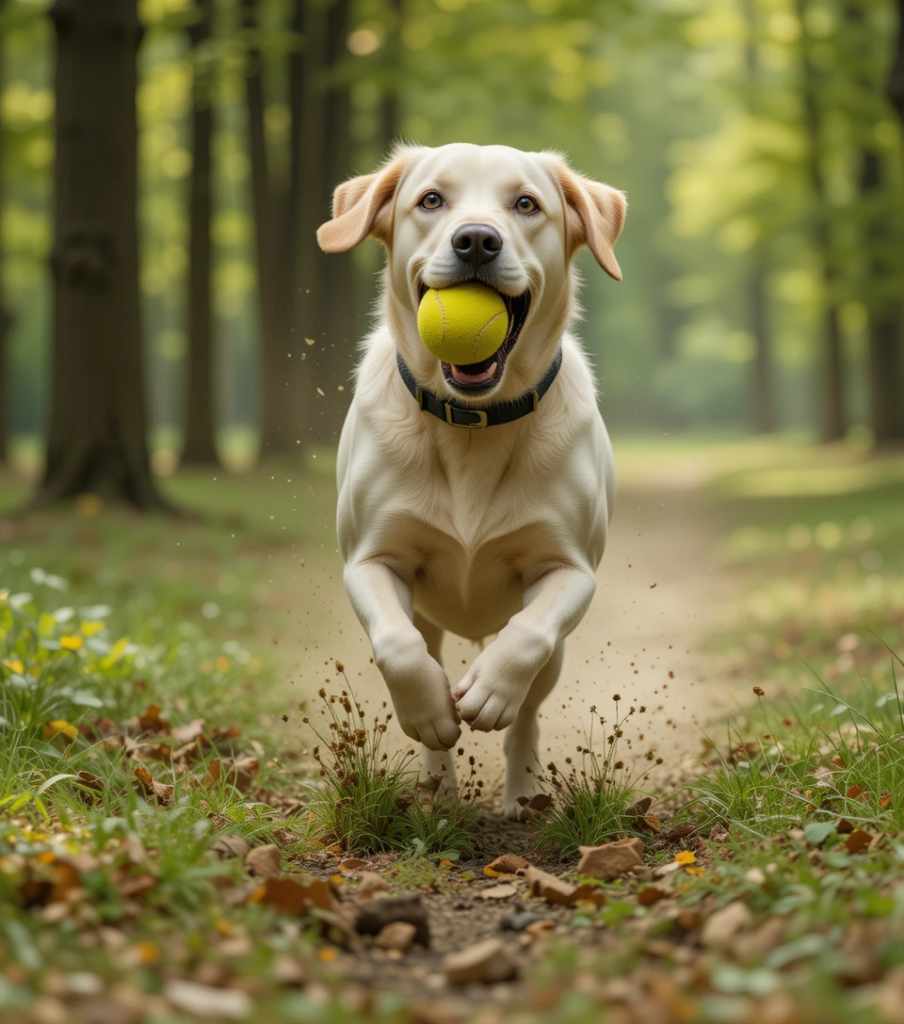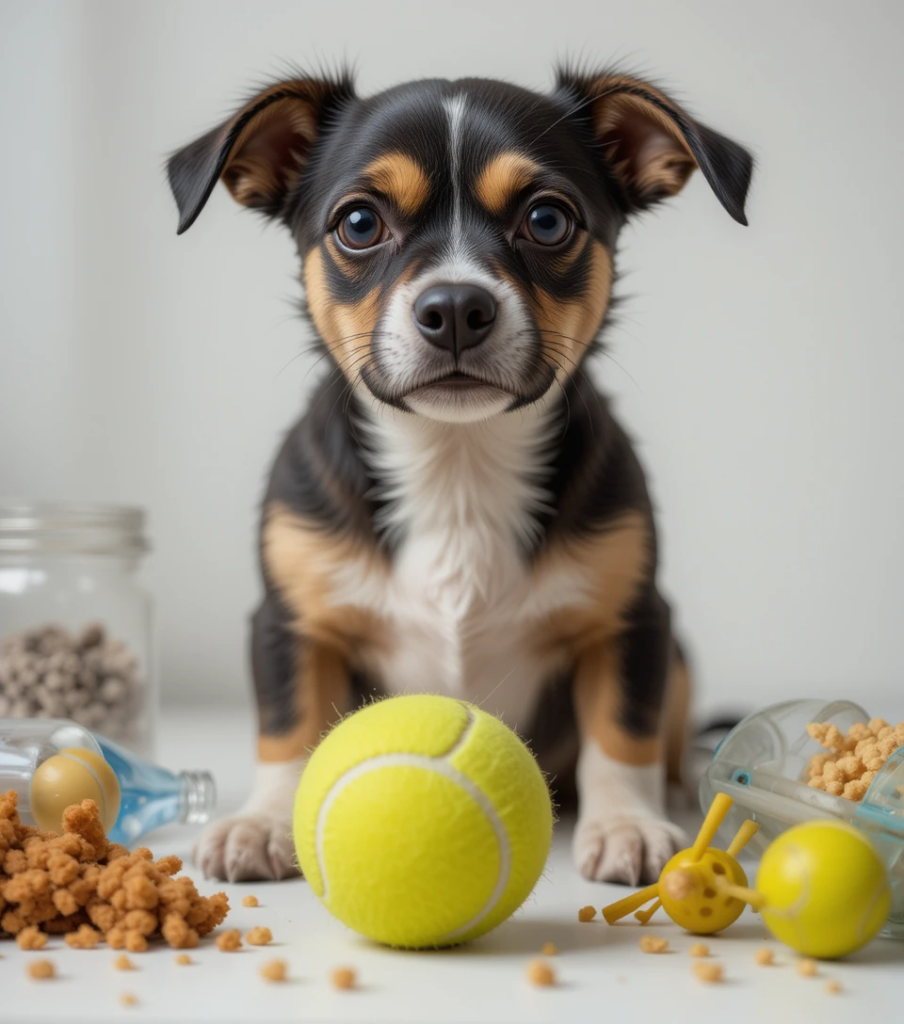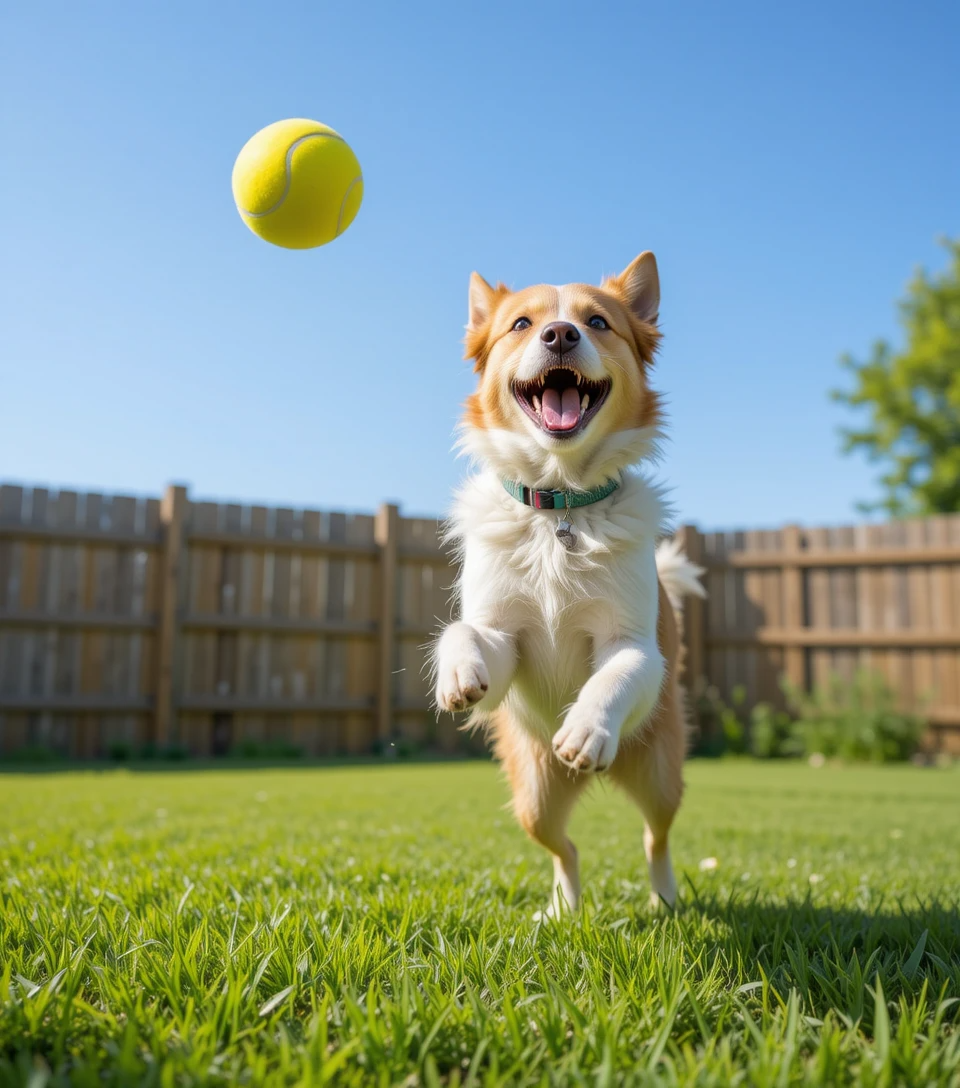Introduction
If you’ve ever tossed a tennis ball and watched your dog launch after it with lightning speed, tail wagging and eyes locked in, you’ve probably asked yourself: “What is it about this fuzzy yellow ball that drives my dog wild?” You’re not alone — tennis balls are practically canine crack. But why? The answer goes deeper than just play. It’s a mix of instinct, sensory satisfaction, and emotional connection. Let’s uncover the surprising truth.
1. The Evolutionary Instinct Behind the Love

At their core, dogs are descendants of hunters. Many breeds — especially retrievers and herding dogs — were developed specifically to chase and retrieve objects. Tennis balls mimic the size and movement of prey, triggering that innate prey drive. So, when your pup pounces on the ball mid-air or stalks it with laser focus, they’re acting on deep-rooted instincts.
2. Sensory Appeal: Texture, Size, and Bounce
Tennis balls hit the sensory jackpot for dogs:
- Texture: The fuzzy outer layer feels good on their gums and mimics fur.
- Size: It’s perfect for most dogs to grip in their mouths.
- Bounce: The unpredictable movement keeps them excited and engaged.
This combination makes tennis balls more than just a toy — they become a target of fascination and fun.
3. Tennis Balls and Mental Stimulation
Chasing, catching, and chewing a tennis ball isn’t just physical — it’s mental. These actions activate problem-solving parts of your dog’s brain:
- Timing the bounce
- Tracking motion
- Satisfying their curiosity
Mental stimulation like this helps prevent boredom, reduce destructive behavior, and improve your dog’s overall well-being.
4. The Joy of Play and Bonding with Humans
Dogs thrive on connection, and fetch is a perfect way to reinforce that bond. When you throw a tennis ball, you’re not just giving your dog exercise — you’re sharing quality time. This interaction strengthens trust, increases happiness, and builds a positive association with the toy.
5. Are Tennis Balls Safe for Dogs?
Here’s where things get a little less joyful — not all tennis balls are made for dogs.
- Abrasive fuzz: Regular tennis balls can wear down enamel like sandpaper.
- Choking hazard: Small or worn balls can break apart or lodge in the throat.
Veterinarians often recommend dog-safe tennis balls that are specifically designed with non-abrasive materials and come in various sizes.
6. How to Choose the Right Tennis Ball for Your Dog
When shopping for dog-friendly tennis balls, look for:
- Non-abrasive felt to protect teeth
- Proper sizing based on breed size
- Durability for strong chewers
- No toxic glue or dyes
Brands like Kong and Chuckit! offer great alternatives designed with safety in mind.
7. Signs Your Dog Might Be Obsessed or Overstimulated

Tennis balls are fun — until they become a fixation. Watch for these red flags:
- Constant barking or whining when the ball is out of sight
- Ignoring food, people, or other toys
- Aggressive guarding of the ball
- Refusing to stop playing
If you notice these behaviors, limit access and introduce other toys or activities to diversify play.
8. Expert Insights: What Vets and Trainers Say
Veterinarians often see dental wear in dogs who chew on tennis balls excessively. Trainers, on the other hand, love the tennis ball’s motivational power in obedience work and agility training — but they also stress balance.
Tip: Use tennis balls as rewards, not just all-day playthings.
9. Conclusion
So, why do dogs love tennis balls?
It’s not just play — it’s instinct, stimulation, and connection rolled into one fuzzy yellow sphere. Understanding your dog’s tennis ball obsession helps you use it in healthy, enriching ways. Just remember: safety first, variety is key, and nothing beats a happy game of fetch between best friends.
FAQs
1. Why are dogs so obsessed with tennis balls?
Because they trigger prey drive, offer sensory stimulation, and create fun bonding experiences with humans.
2. Are tennis balls bad for my dog’s teeth?
Yes, regular tennis balls can wear down enamel. Opt for dog-specific versions with softer felt.
3. What makes tennis balls so appealing to dogs?
Texture, bounce, size, and the way they mimic prey behavior make them irresistible.
4. Can I give a regular tennis ball to my dog?
It’s not recommended. Regular balls aren’t made with pet-safe materials and may cause harm.
5. Are there safer alternatives to tennis balls?
Yes, dog-specific balls like those from Kong or Chuckit! are made for safe chewing and play.
6. Why do some dog breeds love fetch more than others?
Breeds like retrievers were bred to fetch, while others may lack that instinctual drive.
7. How many times should I let my dog fetch per day?
It depends on age and energy level. Start with 15–20 minutes and adjust as needed.
8. Can tennis ball play help reduce my dog’s anxiety?
Absolutely. Mental and physical stimulation can relieve stress and promote calm behavior.
9. Should I worry if my dog chews on the tennis ball constantly?
Yes, excessive chewing can cause dental damage or lead to obsession. Offer alternatives.
10. How can I tell if my dog’s play is turning into obsession?
Look for signs like fixation, guarding, or ignoring other stimuli. Rotate toys to avoid this.

